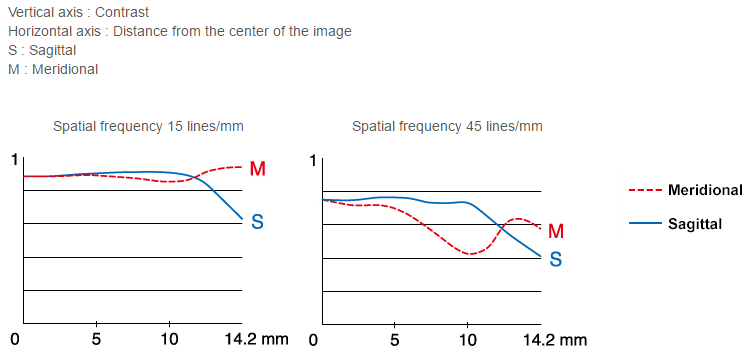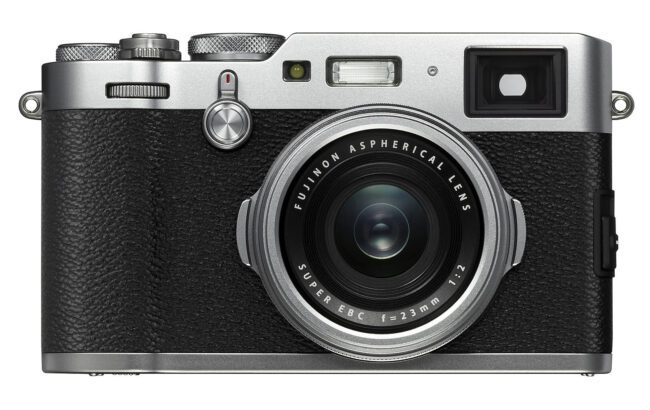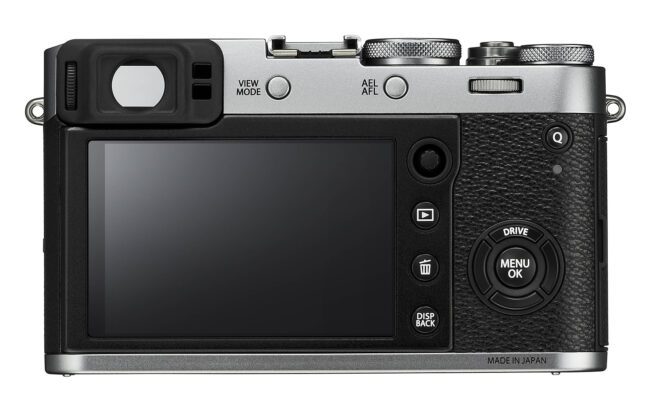It is a big day today for Fuji, since the company finally revealed the price of the GFX 50S, which, at $ 6500, happens to be lower than any other medium format camera on the market, including the Pentax 645Z. In addition, the company announced a brand new lens for its Fuji X-series cameras, the Fuji XF 50mm f/2 R WR, along with two updated cameras, the Fuji X-T20 and the X100F. While the X100F seems to be an incremental update with few changes, it is exciting to see both the XF 50mm f/2 WR and the “mini X-T2” in the form of the X-T20.
Fujifilm XF 50mm f/2 R WR
Let’s first go over the Fujifilm XF 50mm f/2 R WR lens. As you may already know, the “WR” designation for Fuji lenses translates to “Weather Sealing”, so this lens will be a perfect companion to a weather-sealed body like the Fuji X-T2 to shoot outdoors in challenging weather conditions. With a focal length of 50mm (75mm full-frame equivalent) and a large aperture of f/2, this will be a great everyday lens for capturing portraits. The Fuji XF 56mm f/1.2 R is an excellent lens for portraiture, but it is not weather sealed and it has a pretty hefty price tag of $ 999, whereas the 50mm f/2 WR will retail for half that price at $ 450.

The 50mm f/2 follows the third addition in the line-up of quality, enthusiast-grade lenses for the X-series cameras. First it was the XF 35mm f/2 R WR, which was followed by the XF 23mm f/2 R WR and now we have a 50mm f/2 lens. With these three, one could build a great lens kit without spending a ton of money, since each lens sells for less than $ 500.
The MTF charts for the 50mm f/2 R WR look pretty good – we can expect excellent contrast at all apertures and the wide-open performance of the lens is supposed to be better compared to that of the 56mm f/1.2 R (although it is f/2 vs f/1.2). Here is the MTF chart of the lens at f/2:

The separation of the meridional and sagittal lines in the second graph is an indication of inferior bokeh performance compared to that of the 56mm f/1.2 though, which is expected – after-all, the 56mm f/1.2 has a more portrait-optimized lens design in comparison and comes at a much higher cost. For more information on how to interpret the above graphs, see my article on how to read MTF charts.
Fujifilm X100F
The Fujifilm X100F is now a fourth iteration of the popular point-and-shoot camera from Fuji with an APS-C sensor and an integrated 23mm f/2 (35mm full-frame equivalent) lens. As pointed out above, it is more of an incremental update rather than a complete refresh, bringing some improvements to the already excellent camera. Fuji updated the sensor to be the same 24.3 MP X-Trans III sensor used on the X-T2 and the processor has also been updated to the latest and greatest X-Processor Pro.
The autofocus system has been upgraded from 49 focus points to 91 and it is supposed to be both faster and more reliable than on the last-generation X100T. The hybrid viewfinder has also been updated to allow zooming into the image for better focus precision when in electronic viewfinder (EVF) mode. Aside from a few other tweaks to the viewfinder, the EVF refresh rate has been increased to 60 frames per second, which should make shooting in EVF mode a bit smoother. Other in-camera features have not seen drastic changes, aside from the addition of new ACROS film simulation.
Most of the changes on the X100T are ergonomic and they are definitely pretty significant. First of all, there is now a joystick on the back of the camera to be able to switch between focus points. That alone would be worth the upgrade if I were considering moving up from a previous-generation X100 model.
After using the X-T2 with the joystick in the field, it now feels very odd to go back to my X-T1 that does not have one. I got used to it very quickly and it is certainly a notable ergonomic improvement. The buttons to the left of the LCD have been moved to the right now and the “View Mode” button has been moved up, which is a logical place for that button. The AE-L/AF-L button has been also relocated to the top, which makes sense, whereas the dedicated Drive button that used to be there is now part of the multi-controller. In my opinion, all these changes will improve the X100T ergonomically compared to its predecessors.
Price-wise, Fuji kept the MSRP of the X100F the same at $ 1,299. It is an expensive camera, without a doubt, but Fuji sells a ton of X100 cameras (thanks to their popularity for travel and street photography), so the price will probably stay this high for a long time.
Fujifilm X-T20
The most exciting camera release for me though is the Fuji X-T20, which is basically a mini-version of the Fuji X-T2, similar to how the Fuji X-T10 is to the X-T1. While Fuji kept the ergonomics almost the same, the camera got a lot of inner upgrades and features. Sporting the same 24.3 MP APS-C X-Trans sensor and the X-Processor Pro engine as the X-T2, the new X-T20 has a lot to offer for an enthusiast-grade camera. In addition to having the same amazing image quality, the X-T20 will also sport the same autofocus system as the X-T2, which is not something I expected to see.
That’s a pretty big boost from what was in the X-T10 in terms of AF speed, focus points and their reliability. The camera will also inherit all the predictive tracking capabilities from the X-T2, so you will be able to use its autofocus for both stills and video capture. Lastly, the X-T20 will also shoot ultra-high-definition 4K video at up to 29.97p frame rates, with continuous shooting up to 10 minutes, while full HD video recording will be possible up to 59.94 fps. The camera will be able to output video to an external recorder through an HDMI port and it will have an input jack for an external microphone. However, there is no port for a headphone jack, so it will be impossible to listen to the audio during recording. There is also no option for Log output when shooting video. The EVF did not change between the X-T10 and the X-T20, so it is the same 0.39″ 2,360K-dot OLED viewfinder, but the LCD has been upgraded to incorporate touchscreen functions.
The big differences between the X-T20 and the X-T2 will be in continuous shooting rate (5 fps vs 8 fps) and in weather sealing – the X-T20 is not going to be sealed against dust and moisture like the X-T2 is. Also, the ergonomics are going to remain the same as on the X-T10, so there is no added joystick like there is on the X-T2. Lastly, it won’t be possible to attach a grip to the X-T20.
The best part of this announcement is the price – the Fuji X-T20 will ship at an MSRP of $ 899! Considering its features and 4K video capture, that’s a great price for a very solid camera.
Pre-Order Information
As usual, you can pre-order your copy of the Fuji gear from our trusted partners B&H Photo Video and Adorama:
- Pre-Order Fuji 50mm f/2 R WR for $ 450 from B&H Photo Video (Black) / Adorama (Black)
- Pre-Order Fuji X100F for $ 1,299 from B&H Photo Video (Black) / Adorama (Black)
- Pre-Order Fuji X-T20 for $ 899 from B&H Photo Video (Black)/ Adorama (Black)
The post Fuji X-T20, X100F and XF 50mm f/2 WR Announcements appeared first on Photography Life.









